My
List |
Addition Date
|
Target
|
Mission
|
Instrument
|
Size
|

|
2011-10-24 |
|
Spitzer Space Telescope
Wide-field Infrared Survey Explorer (WISE)
|
IRAC
WISE Telescope
|
2811x2154x3 |

|
-
PIA14871:
-
All That Remains of Exploded Star
Full Resolution:
TIFF
(18.16 MB)
JPEG
(660.9 kB)
|

|
2013-06-05 |
|
Spitzer Space Telescope
Wide-field Infrared Survey Explorer (WISE)
|
IRAC
WISE Telescope
|
3000x3000x3 |

|
-
PIA17018:
-
Stars Shoot Jets in Cosmic Playground
Full Resolution:
TIFF
(27.01 MB)
JPEG
(1.76 MB)
|

|
2013-06-05 |
|
Spitzer Space Telescope
Wide-field Infrared Survey Explorer (WISE)
|
IRAC
WISE Telescope
|
9000x7000x3 |

|
-
PIA17019:
-
Life and Death Intermingled
Full Resolution:
TIFF
(189.1 MB)
JPEG
(10.27 MB)
|

|
2010-03-17 |
|
Planck
|
IRAS
|
1000x892x3 |
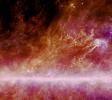
|
-
PIA12964:
-
Tendrils of Cold Dust
Full Resolution:
TIFF
(2.68 MB)
JPEG
(131.2 kB)
|

|
2012-04-26 |
|
Wide-field Infrared Survey Explorer (WISE)
|
IRAS
|
2240x2240x3 |

|
-
PIA15428:
-
Dusty Star Stands Out From the Rest
Full Resolution:
TIFF
(15.07 MB)
JPEG
(265 kB)
|

|
2023-12-22 |
|
|
IRAS
|
1200x675x3 |

|
-
PIA26271:
-
Rho Ophiuchi Imaged by IRAS
Full Resolution:
TIFF
(1.835 MB)
JPEG
(42.5 kB)
|

|
2003-12-18 |
|
Spitzer Space Telescope
|
Infrared Spectrograph (IRS)
|
2872x2056x3 |
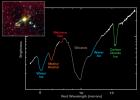
|
-
PIA04940:
-
Spectrum from Embedded Star in Herbig-Haro 46/47
Full Resolution:
TIFF
(2.417 MB)
JPEG
(271.3 kB)
|

|
2003-12-18 |
|
Spitzer Space Telescope
|
Infrared Spectrograph (IRS)
|
2912x2040x3 |

|
-
PIA04941:
-
Spectrum from Faint Galaxy IRAS F00183-7111
Full Resolution:
TIFF
(2.3 MB)
JPEG
(316.7 kB)
|

|
2005-07-27 |
|
Spitzer Space Telescope
|
Infrared Spectrograph (IRS)
|
2361x1506x3 |
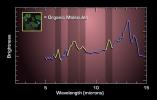
|
-
PIA03537:
-
Charting Ingredients for Life
Full Resolution:
TIFF
(10.68 MB)
JPEG
(174.6 kB)
|

|
2005-03-01 |
|
Spitzer Space Telescope
|
Infrared Spectrograph (IRS)
|
2647x1958x3 |

|
-
PIA07395:
-
Fingerprints in the Light
Full Resolution:
TIFF
(3.413 MB)
JPEG
(283.3 kB)
|

|
2005-04-20 |
HD 69830
|
Spitzer Space Telescope
|
Infrared Spectrograph (IRS)
|
2766x2019x3 |

|
-
PIA07852:
-
Super-Comet or Big Asteroid Belt?
Full Resolution:
TIFF
(16.75 MB)
JPEG
(375.2 kB)
|

|
2005-12-20 |
IRS 46
|
Spitzer Space Telescope
|
Infrared Spectrograph (IRS)
|
3000x2128x3 |

|
-
PIA03242:
-
Life's Starting Materials Found in Dusty Disk
Full Resolution:
TIFF
(19.15 MB)
JPEG
(290.4 kB)
|

|
2006-02-15 |
|
Spitzer Space Telescope
|
Infrared Spectrograph (IRS)
|
3000x2400x3 |

|
-
PIA02180:
-
Galactic Hearts of Glass (Artist Concept)
Full Resolution:
TIFF
(21.6 MB)
JPEG
(875.8 kB)
|

|
2008-01-10 |
NGC 3621
|
Spitzer Space Telescope
|
Infrared Spectrograph (IRS)
|
3000x2400x3 |

|
-
PIA10220:
-
Slender Galaxy with Robust Black Hole
Full Resolution:
TIFF
(21.6 MB)
JPEG
(326.6 kB)
|

|
2007-02-21 |
|
Spitzer Space Telescope
|
Infrared Spectrograph (IRS)
|
3000x2400x3 |

|
-
PIA09197:
-
Cracking the Code of Faraway Worlds
Full Resolution:
TIFF
(21.6 MB)
JPEG
(399.2 kB)
|

|
2007-02-21 |
|
Spitzer Space Telescope
|
Infrared Spectrograph (IRS)
|
3000x2400x3 |

|
-
PIA09198:
-
Cracking the Code of Faraway Worlds
Full Resolution:
TIFF
(21.6 MB)
JPEG
(484.3 kB)
|

|
2007-02-21 |
|
Spitzer Space Telescope
|
Infrared Spectrograph (IRS)
|
3000x2400x3 |

|
-
PIA09199:
-
Cracking the Code of Faraway Worlds
Full Resolution:
TIFF
(21.6 MB)
JPEG
(354 kB)
|

|
2007-07-11 |
HD 189733b
|
Spitzer Space Telescope
|
Infrared Spectrograph (IRS)
|
3000x2136x3 |
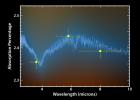
|
-
PIA09715:
-
Exoplanet Forecast: Hot and Wet
Full Resolution:
TIFF
(19.22 MB)
JPEG
(259.2 kB)
|

|
2007-08-29 |
NGC 1333
|
Spitzer Space Telescope
|
Infrared Spectrograph (IRS)
|
3000x2400x3 |

|
-
PIA09965:
-
Spitzer Sees Water Loud and Clear
Full Resolution:
TIFF
(21.6 MB)
JPEG
(987.8 kB)
|

|
2007-10-09 |
|
Spitzer Space Telescope
|
Infrared Spectrograph (IRS)
|
2865x1749x3 |

|
-
PIA09932:
-
A Wealth of Dust Grains in Quasar Winds
Full Resolution:
TIFF
(15.03 MB)
JPEG
(288.3 kB)
|

|
2007-10-09 |
|
Spitzer Space Telescope
|
Infrared Spectrograph (IRS)
|
3000x2400x3 |

|
-
PIA10019:
-
Dust in the Quasar Wind (Artist Concept)
Full Resolution:
TIFF
(21.6 MB)
JPEG
(291.3 kB)
|

|
2007-12-20 |
Cassiopeia A
|
Spitzer Space Telescope
|
Infrared Spectrograph (IRS)
|
960x960x3 |

|
-
PIA10206:
-
Cosmic Ornament of Gas and Dust
Full Resolution:
TIFF
(2.769 MB)
JPEG
(33.43 kB)
|

|
2007-12-20 |
Cassiopeia A
|
Spitzer Space Telescope
|
Infrared Spectrograph (IRS)
|
3000x2400x3 |

|
-
PIA10207:
-
Dissecting the Wake of a Supernova Explosion
Full Resolution:
TIFF
(21.6 MB)
JPEG
(400.6 kB)
|

|
2008-11-11 |
|
Spitzer Space Telescope
|
Infrared Spectrograph (IRS)
|
3000x2400x3 |
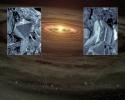
|
-
PIA11417:
-
Quartz-like Crystals Found in Planetary Disks
Full Resolution:
TIFF
(21.6 MB)
JPEG
(607 kB)
|

|
2011-05-26 |
|
Spitzer Space Telescope
|
Infrared Spectrograph (IRS)
|
3000x2400x3 |

|
-
PIA14100:
-
Cosmic Fountain of Crystal Rain
Full Resolution:
TIFF
(21.6 MB)
JPEG
(297.9 kB)
|

|
2006-01-11 |
G29-38
|
Spitzer Space Telescope
|
Infrared Spectrometer (IRS)
|
3000x2400x3 |

|
-
PIA03652:
-
Comet 'Bites the Dust' Around Dead Star (Artist Concept)
Full Resolution:
TIFF
(21.6 MB)
JPEG
(298.4 kB)
|

|
2006-02-08 |
R 66
|
Spitzer Space Telescope
|
Infrared Spectrometer (IRS)
|
5140x2400x3 |

|
-
PIA08006:
-
Supersized Disk (Artist's Concept)
Full Resolution:
TIFF
(37.01 MB)
JPEG
(435.5 kB)
|

|
2007-10-22 |
|
Spitzer Space Telescope
|
Infrared Spectrometer (IRS)
|
2997x1689x3 |

|
-
PIA10086:
-
Cosmic Caper Unfolds in Infrared
Full Resolution:
TIFF
(15.19 MB)
JPEG
(269.1 kB)
|

|
2010-11-04 |
|
Herschel Space Observatory
|
Infrared Telescope
|
2868x1404x3 |

|
-
PIA13571:
-
Analyzing the Pieces of a Warped Galaxy
Full Resolution:
TIFF
(12.08 MB)
JPEG
(278.4 kB)
|

|
2011-01-05 |
|
Herschel Space Observatory
|
Infrared Telescope
|
3016x4106x3 |

|
-
PIA13771:
-
Andromeda is So Hot 'n' Cold
Full Resolution:
TIFF
(37.15 MB)
JPEG
(859.3 kB)
|

|
2011-02-17 |
|
Herschel Space Observatory
|
Infrared Telescope
|
2358x2358x3 |

|
-
PIA13864:
-
Herschel's View of 'Lockman Hole'
Full Resolution:
TIFF
(16.7 MB)
JPEG
(1.012 MB)
|

|
2011-04-13 |
|
Herschel Space Observatory
|
Infrared Telescope
|
1735x1447x3 |

|
-
PIA14038:
-
Star-Studded Strings around Cocoon Nebula
Full Resolution:
TIFF
(7.543 MB)
JPEG
(112 kB)
|

|
2023-12-22 |
|
|
James Webb Space Telescope
IRAS
Spitzer Space Telescope
|
2686x1503x3 |

|
-
PIA25790:
-
Three of NASA's Infrared Telescopes
Full Resolution:
TIFF
(12.05 MB)
JPEG
(317.2 kB)
|

|
2005-07-13 |
Cygnus
|
W. M. Keck Observatory
|
Keck I Telescope
|
640x480x3 |

|
-
PIA03520:
-
Land of Three Suns (Artist's Concept Animation)

Full Resolution:
TIFF
(23.04 MB)
JPEG
(574 kB)
|

|
2005-07-13 |
Cygnus
|
W. M. Keck Observatory
|
Keck I Telescope
|
3000x2400x3 |

|
-
PIA03521:
-
Circus Family of Stars (Artist's Concept)

Full Resolution:
TIFF
(21.6 MB)
JPEG
(147.3 kB)
|

|
2013-09-30 |
|
Kepler
Spitzer Space Telescope
|
Kepler Telescope
Spitzer Space Telescope
|
3840x2160x3 |

|
-
PIA17445:
-
Partially Cloudy Skies on Kepler-7b (Artist Concept)
Full Resolution:
TIFF
(24.89 MB)
JPEG
(243 kB)
|

|
2017-04-04 |
|
New Horizons
|
LORRI
|
1024x1024x3 |
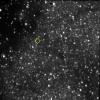
|
-
PIA21588:
-
A KBO among the Stars
Full Resolution:
TIFF
(845.9 kB)
JPEG
(414.8 kB)
|

|
2017-07-19 |
Kuiper Belt Object
|
New Horizons
|
LORRI
MVIC
|
559x345x3 |

|
-
PIA21865:
-
Wink of a Star
Full Resolution:
TIFF
(194.8 kB)
JPEG
(38.14 kB)
|

|
2012-12-03 |
Sol (our sun)
|
Voyager
|
Magnetometer
|
2006x1479x3 |

|
-
PIA16482:
-
The Sun's Southern Wind Flows Northward (Artist's Concept)
Full Resolution:
TIFF
(8.904 MB)
JPEG
(151.9 kB)
|

|
2009-10-15 |
Sol (our sun)
|
Cassini-Huygens
|
MIMI
|
1280x720x3 |

|
-
PIA12310:
-
The Bubble of Our Solar System

Full Resolution:
TIFF
(2.768 MB)
JPEG
(62.85 kB)
|

|
2009-11-20 |
Sol (our sun)
|
Cassini-Huygens
|
MIMI
|
1163x781x3 |

|
-
PIA12374:
-
Particles from the Heliosphere
Full Resolution:
TIFF
(2.728 MB)
JPEG
(143 kB)
|

|
2015-07-10 |
Sol (our sun)
|
Mars Science Laboratory (MSL)
|
Mastcam
|
801x400x1 |

|
-
PIA19801:
-
Tracking Sunspots from Mars, Summer 2015 (Animation)

Full Resolution:
TIFF
(320.9 kB)
JPEG
(22.27 kB)
|

|
2015-07-10 |
Sol (our sun)
|
Mars Science Laboratory (MSL)
|
Mastcam
|
801x400x1 |

|
-
PIA19802:
-
Tracking Sunspots from Mars, April 2015 (Animation)

Full Resolution:
TIFF
(320.9 kB)
JPEG
(25.3 kB)
|

|
2011-12-23 |
Pleiades
|
MESSENGER
|
MDIS - Narrow Angle
|
508x512x1 |

|
-
PIA15244:
-
Stars Are Stars
Full Resolution:
TIFF
(260.6 kB)
JPEG
(58.4 kB)
|

|
2022-10-12 |
Star
|
James Webb Space Telescope
|
Mid-Infrared Instrument (MIRI)
|
2258x1558x3 |

|
-
PIA25432:
-
Dust Rings in the Wolf-Rayet 140 System
Full Resolution:
TIFF
(6.995 MB)
JPEG
(122.5 kB)
|

|
2001-11-03 |
Borrelly
|
Deep Space 1 (DS1)
|
Miniature Integrated Camera Spectrometer
|
500x500x1 |
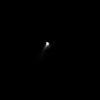
|
-
PIA03506:
-
Early Close Image of Comet Borrelly
Full Resolution:
TIFF
(9.316 kB)
JPEG
(3.677 kB)
|

|
2003-12-18 |
|
Spitzer Space Telescope
|
MIPS
|
1108x2148x3 |

|
-
PIA04938:
-
Long-Wavelength Infrared Views of Messier 81
Full Resolution:
TIFF
(3.404 MB)
JPEG
(164.3 kB)
|

|
2003-12-18 |
|
Spitzer Space Telescope
|
MIPS
|
1424x944x3 |

|
-
PIA04942:
-
Circumstellar Disk Around Fomalhaut
Full Resolution:
TIFF
(789.1 kB)
JPEG
(58.51 kB)
|

|
2003-12-18 |
|
Spitzer Space Telescope
|
MIPS
|
658x430x3 |

|
-
PIA04943:
-
Comet Schwassmann-Wachmann I
Full Resolution:
TIFF
(611.8 kB)
JPEG
(26.98 kB)
|

|
2004-04-13 |
|
Spitzer Space Telescope
|
MIPS
|
2499x779x3 |

|
-
PIA05733:
-
Stormy Clouds of Star Birth
Full Resolution:
TIFF
(3.511 MB)
JPEG
(102.2 kB)
|

|
2005-01-10 |
Vega
|
Spitzer Space Telescope
|
MIPS
|
1419x707x3 |

|
-
PIA07218:
-
Tiny Particles, So Far Away
Full Resolution:
TIFF
(1.332 MB)
JPEG
(36.35 kB)
|

|
2005-01-11 |
Encke
|
Spitzer Space Telescope
|
MIPS
|
2154x2154x3 |

|
-
PIA07222:
-
Riding a Trail of Debris
Full Resolution:
TIFF
(6.884 MB)
JPEG
(215.1 kB)
|

|
2005-01-11 |
|
Spitzer Space Telescope
|
MIPS
|
2364x1172x3 |

|
-
PIA07220:
-
Mysterious Blob Galaxies Revealed
Full Resolution:
TIFF
(4.293 MB)
JPEG
(173.1 kB)
|

|
2005-10-13 |
M31
|
Spitzer Space Telescope
|
MIPS
|
8193x2410x3 |

|
-
PIA03031:
-
Amazing Andromeda in Red
Full Resolution:
TIFF
(19.75 MB)
JPEG
(3.247 MB)
|

|
2006-10-12 |
|
Spitzer Space Telescope
|
MIPS
|
2396x2680x3 |

|
-
PIA01937:
-
The Light and Dark Sides of a Distant Planet
Full Resolution:
TIFF
(19.29 MB)
JPEG
(812.9 kB)
|

|
2006-10-03 |
|
Spitzer Space Telescope
|
MIPS
|
1500x558x3 |

|
-
PIA01319:
-
A Star's Close Encounter
Full Resolution:
TIFF
(839.7 kB)
JPEG
(43.53 kB)
|

|
2006-12-08 |
|
Spitzer Space Telescope
|
MIPS
|
2861x1439x3 |

|
-
PIA09070:
-
Red Giant Plunging Through Space
Full Resolution:
TIFF
(12.35 MB)
JPEG
(212.3 kB)
|

|
2007-10-25 |
|
Spitzer Space Telescope
|
MIPS
|
1003x1139x3 |

|
-
PIA10091:
-
Missing Black Holes Found!
Full Resolution:
TIFF
(1.145 MB)
JPEG
(69.72 kB)
|

|
2008-10-01 |
Cassiopeia A
|
Spitzer Space Telescope
|
MIPS
|
1769x1341x3 |

|
-
PIA11213:
-
Supernova Flashback
Full Resolution:
TIFF
(7.128 MB)
JPEG
(135.1 kB)
|

|
2008-12-03 |
|
Spitzer Space Telescope
|
MIPS
|
943x945x3 |

|
-
PIA11435:
-
Vivid View of Tycho's Supernova Remnant
Full Resolution:
TIFF
(2.677 MB)
JPEG
(204 kB)
|

|
2009-11-04 |
HR 8799
|
Spitzer Space Telescope
|
MIPS
|
1100x1100x3 |

|
-
PIA12336:
-
A Picture of Unsettled Planetary Youth
Full Resolution:
TIFF
(1.213 MB)
JPEG
(40.46 kB)
|

|
2003-12-18 |
|
Spitzer Space Telescope
|
MIPS
IRAC
|
2332x1616x3 |
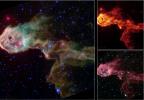
|
-
PIA04935:
-
Multi-Wavelength Views of Protostars in IC 1396
Full Resolution:
TIFF
(9.179 MB)
JPEG
(359.4 kB)
|

|
2003-12-18 |
|
Spitzer Space Telescope
|
MIPS
IRAC
|
2286x2334x3 |

|
-
PIA04937:
-
Multi-Wavelength Views of Messier 81
Full Resolution:
TIFF
(12.2 MB)
JPEG
(516.4 kB)
|

|
2006-09-28 |
|
Galaxy Evolution Explorer (GALEX)
Spitzer Space Telescope
|
MIPS
Ultraviolet/Visible Camera
|
7430x2410x3 |

|
-
PIA08787:
-
Amazing Andromeda Galaxy
Full Resolution:
TIFF
(53.72 MB)
JPEG
(3.426 MB)
|

|
2014-08-21 |
|
Chandra X-ray Observatory
Spitzer Space Telescope
XMM-Newton
|
MIPS
XMM-Newton X-ray
|
2051x1591x3 |

|
-
PIA18468:
-
Supernova Seen In Two Lights
Full Resolution:
TIFF
(9.794 MB)
JPEG
(189.6 kB)
|

|
2004-03-12 |
|
Mars Exploration Rover (MER)
|
Navigation Camera
Panoramic Camera
|
1174x1041x1 |

|
-
PIA05557:
-
It's a Bird, It's a Plane, It's a... Spacecraft?
Full Resolution:
TIFF
(600.2 kB)
JPEG
(54.38 kB)
|

|
2013-12-19 |
|
NEOWISE
|
NEOWISE Telescope
|
2032x2032x3 |

|
-
PIA17810:
-
NEOWISE Opens its Eyes
Full Resolution:
TIFF
(12.39 MB)
JPEG
(388 kB)
|

|
2014-01-28 |
|
NEOWISE
|
NEOWISE Telescope
|
660x308x3 |

|
-
PIA17833:
-
NEOWISE Spies Comet C/2013 A1 Siding Spring
Full Resolution:
TIFF
(610.3 kB)
JPEG
(65.2 kB)
|

|
2014-07-23 |
|
NEOWISE
|
NEOWISE Telescope
|
728x585x3 |

|
-
PIA18652:
-
NEOWISE Spots Comet Catalina
Full Resolution:
TIFF
(1.278 MB)
JPEG
(113.2 kB)
|

|
2014-07-23 |
|
NEOWISE
|
NEOWISE Telescope
|
1596x1080x3 |

|
-
PIA18653:
-
NEOWISE Spies Activity on Comet Catalina
Full Resolution:
TIFF
(5.173 MB)
JPEG
(315 kB)
|

|
2014-08-07 |
|
NEOWISE
|
NEOWISE Telescope
|
2519x2519x3 |

|
-
PIA18593:
-
NEOWISE Spies Comet C/2013 A1 Siding Spring a Second Time
Full Resolution:
TIFF
(19.04 MB)
JPEG
(483.9 kB)
|

|
2008-03-27 |
HD 189733b
|
Hubble Space Telescope
|
NICMOS
|
4000x3000x3 |
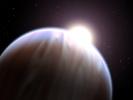
|
-
PIA10363:
-
Astronomers Detect First Organic Molecule on an Exoplanet (Artist's Concept)
Full Resolution:
TIFF
(36 MB)
JPEG
(282.5 kB)
|

|
2012-06-28 |
|
NuSTAR
|
NuSTAR
|
1366x1024x3 |

|
-
PIA15804:
-
NuSTAR's First View of High-Energy X-ray Universe
Full Resolution:
TIFF
(4.198 MB)
JPEG
(312.9 kB)
|

|
2012-10-23 |
|
NuSTAR
|
NuSTAR
|
3202x2402x3 |

|
-
PIA16213:
-
First Look at Milky Way's Monster in High-Energy X-ray Light
Full Resolution:
TIFF
(23.08 MB)
JPEG
(206.4 kB)
|

|
2013-01-07 |
|
NuSTAR
|
NuSTAR
|
1700x1700x3 |

|
-
PIA16605:
-
Blazing Black Holes Spotted in Spiral Beauty
Full Resolution:
TIFF
(8.674 MB)
JPEG
(421.3 kB)
|

|
2013-01-07 |
Cassiopeia A
|
NuSTAR
|
NuSTAR
|
2200x2200x3 |

|
-
PIA16606:
-
Sizzling Remains of a Dead Star
Full Resolution:
TIFF
(14.53 MB)
JPEG
(408.9 kB)
|

|
2013-06-11 |
|
NuSTAR
|
NuSTAR
|
6620x3724x3 |
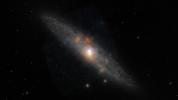
|
-
PIA17244:
-
Sculptor Galaxy Shines with X-rays
Full Resolution:
TIFF
(73.99 MB)
JPEG
(547.1 kB)
|

|
2013-09-05 |
|
NuSTAR
|
NuSTAR
|
3200x1800x3 |
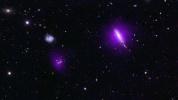
|
-
PIA17440:
-
Black Holes Shine for NuSTAR
Full Resolution:
TIFF
(17.29 MB)
JPEG
(718.2 kB)
|

|
2014-02-19 |
|
NuSTAR
|
NuSTAR
|
4000x2250x3 |

|
-
PIA17840:
-
The Creation of Titanium in Stars
Full Resolution:
TIFF
(27.01 MB)
JPEG
(330.3 kB)
|

|
2014-08-12 |
|
NuSTAR
|
NuSTAR
|
3300x2550x3 |

|
-
PIA18467:
-
Big, Spinning Black Hole Blurs Light
Full Resolution:
TIFF
(25.26 MB)
JPEG
(349.5 kB)
|

|
2015-04-29 |
|
NuSTAR
|
NuSTAR
|
2800x1575x3 |

|
-
PIA19334:
-
Extra X-rays at the Hub of Our Milky Way Galaxy
Full Resolution:
TIFF
(13.24 MB)
JPEG
(864.6 kB)
|

|
2015-05-07 |
|
NuSTAR
|
NuSTAR
|
3000x1679x3 |

|
-
PIA19335:
-
Tracing Titanium's Escape
Full Resolution:
TIFF
(15.12 MB)
JPEG
(299.3 kB)
|

|
2014-12-22 |
Sol (our sun)
|
NuSTAR
|
NuSTAR
SDO
|
3150x1600x3 |
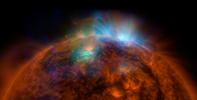
|
-
PIA18906:
-
Sun Shines in High-Energy X-rays
Full Resolution:
TIFF
(15.13 MB)
JPEG
(282 kB)
|

|
2015-07-08 |
Sol (our sun)
|
NuSTAR
|
NuSTAR
SDO
|
4096x4096x3 |

|
-
PIA19821:
-
NuSTAR Stares at the Sun
Full Resolution:
TIFF
(50.35 MB)
JPEG
(797.3 kB)
|

|
2012-10-23 |
|
NuSTAR
|
NuSTAR
Spitzer Space Telescope
|
4000x2400x3 |

|
-
PIA16214:
-
Pointing X-ray Eyes at our Resident Supermassive Black Hole
Full Resolution:
TIFF
(28.81 MB)
JPEG
(2.077 MB)
|

|
2013-11-26 |
|
NuSTAR
|
NuSTAR
|
1600x1600x3 |

|
-
PIA17560:
-
Black Holes of the Circinus Galaxy
Full Resolution:
TIFF
(7.683 MB)
JPEG
(599.9 kB)
|

|
2013-11-26 |
|
NuSTAR
|
NuSTAR
|
1400x1400x3 |
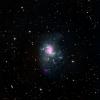
|
-
PIA17561:
-
Topsy Turvy Black Holes
Full Resolution:
TIFF
(5.882 MB)
JPEG
(137.5 kB)
|

|
2014-01-09 |
|
NuSTAR
|
NuSTAR
|
2500x2500x3 |

|
-
PIA17566:
-
High-Energy X-ray View of 'Hand of God'
Full Resolution:
TIFF
(18.76 MB)
JPEG
(172.9 kB)
|

|
2014-01-09 |
|
NuSTAR
|
NuSTAR
|
3300x2800x3 |

|
-
PIA17567:
-
Different Flavors of Black Holes
Full Resolution:
TIFF
(27.73 MB)
JPEG
(545.3 kB)
|

|
2019-02-20 |
|
NuSTAR
|
NuSTAR
|
2500x2500x3 |

|
-
PIA23005:
-
A Hard X-ray Look at M51
Full Resolution:
TIFF
(9.984 MB)
JPEG
(228.8 kB)
|

|
2019-09-04 |
|
NuSTAR
|
NuSTAR
|
3488x3485x3 |

|
-
PIA23401:
-
NASA Telescope Spots Mystery in Fireworks Galaxy
Full Resolution:
TIFF
(18.8 MB)
JPEG
(820.4 kB)
|

|
2013-09-12 |
Sol (our sun)
|
Voyager
|
Oschin Schmidt Telescope
|
891x893x1 |

|
-
PIA17461:
-
Heading toward Gliese 445
Full Resolution:
TIFF
(796.7 kB)
JPEG
(105.7 kB)
|

|
1999-12-01 |
Protostellar Disk L1157
|
|
Owens Valley Millimeter Array
|
787x1019x3 |

|
-
PIA04211:
-
Protostellar Disk L1157
Full Resolution:
TIFF
(2.409 MB)
JPEG
(34.08 kB)
|

|
1999-12-01 |
Altair
|
Palomar Testbed Interferometer
|
Palomar Testbed Interferometer
|
512x511x1 |

|
-
PIA04204:
-
Altair
Full Resolution:
TIFF
(177.1 kB)
JPEG
(12.78 kB)
|

|
2004-03-08 |
Sol (our sun)
|
Mars Exploration Rover (MER)
|
Panoramic Camera
|
399x198x3 |

|
-
PIA05518:
-
Martian Eclipses: Deimos and Phobos
Full Resolution:
TIFF
(44.62 kB)
JPEG
(10.21 kB)
|

|
2004-01-10 |
Sol (our sun)
|
Mars Exploration Rover (MER)
|
Panoramic Camera
|
1600x1200x1 |

|
-
PIA05041:
-
Martian Sunsets More Than Just Pretty
Full Resolution:
TIFF
(188.5 kB)
JPEG
(68.7 kB)
|

|
2004-03-11 |
|
Mars Exploration Rover (MER)
|
Panoramic Camera
|
1024x1024x1 |

|
-
PIA05546:
-
Stars in Orion as Seen from Mars
Full Resolution:
TIFF
(71.62 kB)
JPEG
(17.04 kB)
|

|
2004-03-12 |
|
Mars Exploration Rover (MER)
|
Panoramic Camera
|
1024x1024x1 |

|
-
PIA05551:
-
Stars and Cosmic Rays Observed from Mars
Full Resolution:
TIFF
(145.9 kB)
JPEG
(53.38 kB)
|

|
2004-03-12 |
Sol (our sun)
|
Mars Exploration Rover (MER)
|
Panoramic Camera
|
360x360x5 |

|
-
PIA05553:
-
Martian Moon Blocks Sun

Full Resolution:
|

|
2004-03-12 |
Sol (our sun)
|
Mars Exploration Rover (MER)
|
Panoramic Camera
|
360x360x5 |

|
-
PIA05556:
-
Deimos Crosses Face of Sun

Full Resolution:
|

 Planetary Data System
Planetary Data System




















































































































